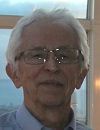 |
||
|
Leningrad NPP: the assembly of the turbine island main equipment has been completed at the construction site of the innovative power unit No 2 Rosenergoatom, PUBLISHED 11.08.2018 At the construction site of the innovative power unit No 2 with the VVER-1200 reactor of Leningrad NPP, the specialists completed the assembly of all the main equipment of the turbine building. The work inside the turbine building is conducted according to the schedule. “To date, we have put the stator, separators, moisture separator-reheaters, the deaerator, turbine condensers, high and low pressure heaters, and heat exchangers to the design places. The turbine shaft has been aligned; three travelling cranes have been successfully operated. Four places of the turbine building, which total area is almost 25 thousand square meters, are filled with more than 5 thousand tons of pipelines and almost 4 thousand units of valves that are being assembled”, Alexey Biryukov, the Chief Constructor of the Constructor Control Department of the Capital Projects Division of LNPP under construction, said. As specified by Kiril Mazurin, the Deputy Chief Engineer for Construction and Installation at the Capital Projects Division, the main construction in the 2nd unit turbine building are almost completed. The contractor’s personnel need to assemble the protective facing panels on the external surfaces of the building and complete the whole complex of finishing works inside. In the near future, they will go on to installing insulation, performing low-current and electrical installation works, laying the external and internal engineering networks. In total, 71 technological systems will be located in the turbine building of the LNPP power unit No 2 with the VVER reactor 1200. The duration of each system’s installation directly affects the timing of the key operations at the stage of power unit commissioning. The timing of the cleanout of the technological systems to the open reactor, cold and hot trials, physical start-up, putting the turbine for shafting at the turning gear and other operations depends on how promptly and qualitatively the installers perform their work today. “Construction, installation and finishing works at the new power units are conducted at the same time. The site uses the most advanced methods of work. In addition, all the workers at the facility have experience of effective cooperation and successful implementation of similar operations at the power unit No 1 with the VVER-1200 reactor, which is currently at the final stage of commissioning. All this allows not only to stay on schedule, but in some areas even to reduce the time”, the Deputy Director for Capital Construction – Head of Leningrad NPP Capital Construction Alexandr Chebotarev noted. Leningrad NPP is a branch of Rosenergoatom. The Plant is located at the town of Sosnovy Bor, 40 km west of St. Petersburg on the shore of the Gulf of Finland. LNPP is the first plant in the country with RBMK-1000 reactors (thermal-neutron heat-pipe cooled uranium-graphite nuclear reactors). The NPP operates four power units with an electric capacity of 1,000 MW each. The first unit of replacement capacities with VVER-1200 reactor is at the physical start-up stage, the second VVER-1200 type unit is under construction. Rosenergoatom JSC is the customer-developer of the project, ATOMPROEKT JSC is the general designer, and CONTSERN TITAN-2 JSC is the general contractor. Topics: NPP, Leningrad NPP, Russia Other news: WANO calls on industry to build on progress after post-Fukushima improvements These 12 projects have been successfully delivered by WANO and its worldwide membership. The pre-stressing system installation has been completed at Unit 1 at Belarus NPP Readiness of the pre-stressing system is one of the necessary conditions of the next critical operation. 443 nuclear units are operating in the world Another 65 units have the status of the being built one. |
Hero of the day 
Peter Prozesky: WANO unites every company and country in the world with a commercial NPP WANO's mission is to maximise the safety and reliability of nuclear power plants worldwide. We do this by working together to assess, benchmark and improve performance through mutual support, exchange of information, and emulation of best practices. INTERVIEW
William D. Magwood, IV OPINION
Siegfried Hecker |

